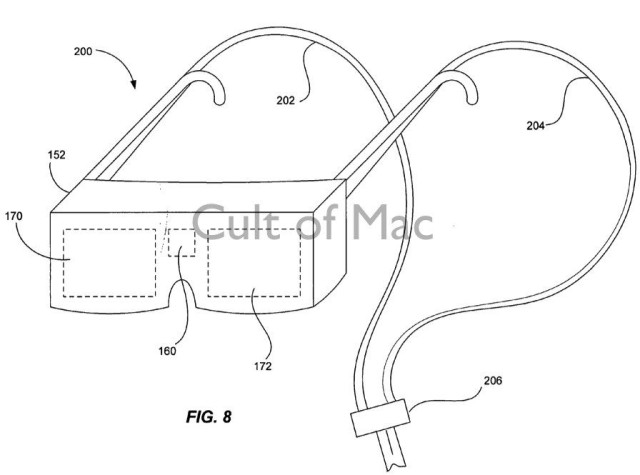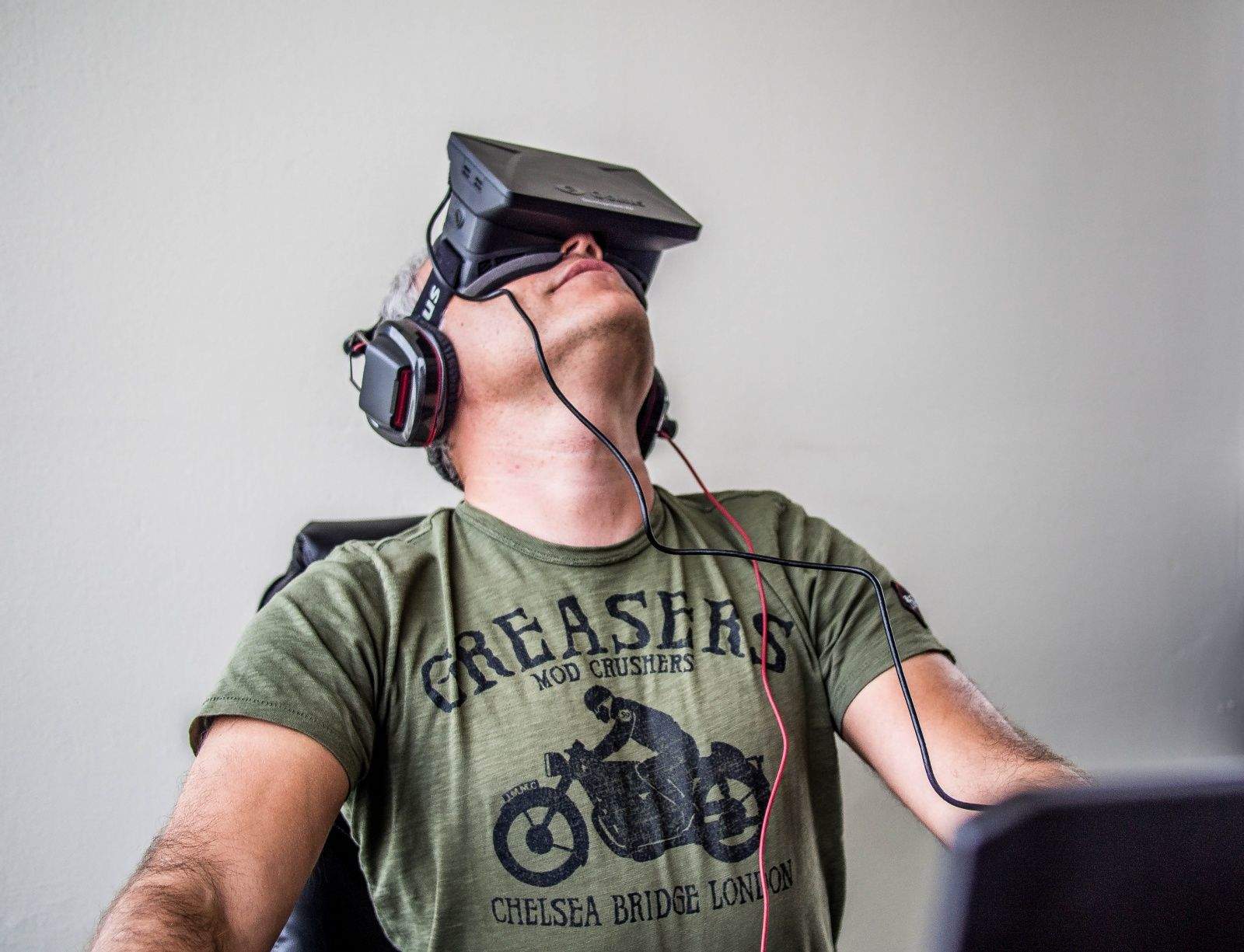When Facebook acquired Oculus VR for $2 billion, Mark Zuckerberg said virtual reality was the natural follow-up to mobile as a platform. And while Apple might have missed the boat on Oculus, has Cupertino really missed out on virtual reality?
There’s plenty of evidence to suggest that Apple has been investigating this area for the better part of a decade — well before the Oculus Rift gaming headset appeared on Kickstarter.
More importantly, Apple owns many related patents, including what look to be some fairly comprehensive ones covering head-mounted displays.
Back in November 2006, Apple filed a patent for an HMD (head-mounted display) system, which created images using a remote laser light engine. Unlike previous designs for HMDs , Apple’s system was more compact, while providing superior image quality. Created in part by Tony Fadell (best known as the father of the iPod, and the founder of Nest), the technology was designed to immerse the viewer in a movie, music video or videogame.

Apple then built on this concept with a more comprehensive 2008 patent for a pair of Apple goggles, designed to let users view media and play games on a bigger screen than their mobile device’s built-in display.
Including a few neat touches, Apple’s patent even described how each screen could be automatically adjusted for users who wear glasses, or to simulate a 3-D effect. The patent also describes how the goggles could connect wirelessly to other iOS devices — a bit like Apple’s CarPlay system — and would be able to identify users by tracking eyeballs, voice and fingerprints.

Two names are particularly associated with Apple’s exploration into the field of head-mounted wearables. The first of these is Richard DeVaul, who Apple hired in January 2010 to be its Senior Prototype Engineer, with the job of investigating and and rapid-prototyping new technologies and features across Apple’s product line. DeVaul had plenty of experience in wearable computing, and as a Ph.D. student wrote his dissertation on “Memory Glasses” — a heads-up display focused on serving as a wearable, proactive, context-aware memory aid.
The second key researcher in this area is John Tang, who is named as a co-inventor on the 2008 patent. Tang joined Apple in 2006 as its Senior Engineering Program Manager.
Apple could be well-placed to compete with Google and Facebook in the area of head-mounted displays.
Interestingly, neither of these two currently work at Apple: DeVaul joined Google in 2011, and now works on evaluating potential moonshots(!). Tang, meanwhile, left Apple in 2008, going on to work for Palm, Amazon’s Lab126 and currently Sonos.
But that’s not to say that Apple doesn’t have other employees who have worked on HMDs. Both current Product Design manager Chris Prest and Evans Hankey, who is part of Jony Ive’s design team, have explored this area while at Apple.
The company’s recent wearable-sensor expert hires are thought to be working on Apple’s much-vaunted iWatch, but as the 2008 patent suggests, HMDs could also be used in conjunction with various biometric sensors. Fingerprint recognition was still a pipe dream for Apple when it filed its 2008 patent application — but became a reality thanks to the acquisition of AuthenTec in 2012, which led to the Touch ID function of the iPhone 5s.
The team behind Siri, meanwhile, brought significant advances in Apple’s voice recognition capabilities, which weren’t possible in 2008. Although Apple doesn’t own the company, in 2014 Israeli startup Umoove debuted its eye-tracking technology for iOS, which has several key advantages over rival technologies. Earlier this year there was also a rumor that Apple’s proposed iPad Pro device could feature eye-tracking technology.

Photo: Google
Couple this with Apple’s perceived trustworthiness in the marketplace (certainly compared to Facebook’s, which has already seen at least one developer announce that they are abandoning Oculus Rift post-acquisition), and the company could be well-placed to compete with Google and Facebook in the area of HMDs.
It’s also worth pointing out that the hiring of executives like former Yves Saint Laurent CEO Paul Deneve to work on “special projects” could help turn HMDs into acceptable mass-market items — something that Google Glass hasn’t yet managed to do.
Of course, as with all of Apple’s patents, just because Apple has patented an idea doesn’t mean that it will necessarily find its way into an actual product. Patents can be attempts to block or mislead competitors, or else may refer to a concept that Apple has looked into and not deemed worth following up. If there’s anything we’ve learned from the iPod, iPhone and other previous Apple innovations, it is that the company will often bide its time to watch how competitors fare in the marketplace before making its move.
Either way, if Oculus Rift and Google Glass really do change the world the way Facebook and Google are convinced they will, Apple will be far from left out.


